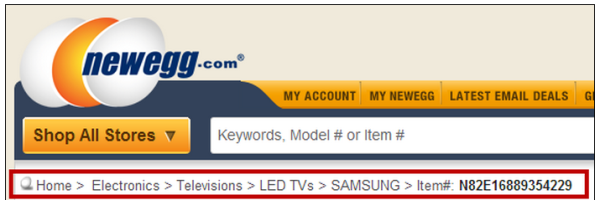There’s no shortage of new digital marketing channels these days — and while they are innovative, exciting, and fun to experiment with, they can also distract you from SEO basics that can deliver performance gains. Your organic click-through rate (CTR) is a great example.
A simple page title tweak could take you from driving 2% of consumers to your landing page, to driving 20%! But today, your organic CTR can be affected by several different elements. Below we’ll take a look at five factors in your control:
1. Search Engine Results Page (SERP) Ranking
Marketers everywhere are chasing after Page 1 organic rankings, but is there much of a difference between Position 1 and Position 6? Or Position 2 and Position 7? The short answer is “yes”!
Studies conducted by Nielsen Norman Group report that web users view the screen in an F-shaped pattern, and spend 80% of their time looking at information above the fold (the portion of the screen viewable without scrolling — usually rankings 1-5).
Based on these data, one could infer that rankings above the fold are seen first and more often — and that users may be more likely to click on these listings simply because of their navigation behavior.
Moreover, data from a 2013 Google CTR Study by Catalyst indicates that on average, 83% of Page 1 organic clicks go to the first four organic rankings.
Clearly, while ranking on the first page is great for achieving brand visibility, you need to get your website to rank above the fold to begin seeing substantial traffic gains.

Performance Tips:
- Strive to achieve organic rankings closer to the top of the search result pages (above the fold), as these positions can drive higher CTRs.
- Focus your e-commerce organic strategy on developing informational based content. SERP listings for informational search queries above the fold are less cluttered and will have a better chance of attracting the user’s attention/click.
2. Title Tag
The title tag defines the title of your web page (or other web document), and is typically the text that appears as a blue link on search engine results pages.
A page’s title can greatly influence whether or not a searcher clicks on your page in the SERPs, and it has the power to make or break your organic CTR. Be sure to take the time to carefully craft your title tags.
Below is a great example of a well-crafted title tag by The Boston Calendar. Let’s examine what they’ve done right:

- The title contains the target keyword (“boston calendar”) close to the front of the tag, which is great for grabbing the user’s attention, and can even give rankings a slight boost.
- The title is 45 characters long, and safe from truncation. Google usually truncates a title snippet that exceeds 65 characters.
- Several of the words in the title match the user’s query — this causes them to be bolded in the SERPs.
- The title is in the same “voice” as the brand, which is great for delivering consistent messaging across marketing channels.
- The text, “events that don’t suck,” evokes emotion and creates curiosity.
Performance Tips:
- As you develop your tags, focus on the following important elements: character length, word choice, and query match.
- For increased organic clicks, try adjusting your page titles to be more relevant and/or enticing to click. But do not remove your target keywords as it could impact your organic ranking.
3. Meta Description
Meta descriptions help users understand what your content is about before they see it. While they don’t directly impact organic search rankings, they can greatly influence whether or not users click through to your website. Given that, never overlook meta descriptions for high priority pages.
In fact, you might want to think of meta descriptions as free advertising — it’s basically an opportunity to get your message out each time your listing is displayed in the SERPs. However, keep in mind that sometimes Google doesn’t display the meta description in a SERP snippet, and instead uses other sources like publically available data and/or the content of the page.
Take a look at the below meta description by Wicked Wine Candles. What are they doing well in this example?

- The meta description contains the target keyword (“wine bottle candles”), which matches the user’s query. As a result, these words are bolded.
- At 154 characters long, the entire meta description is displayed in the search snippet. Google typically truncates meta descriptions that are greater than 160 characters.
- The copy describes the company’s products in their style and voice.
- The call-to-action references a promotional offer for free holiday shipping.
Performance Tips:
- When you write your page meta descriptions, be sure to focus on character length, word choice, query match, and the call-to-action.
- For special times of year, like the holiday season or your peak selling periods, adjust your meta descriptions to be more relevant, and reference upcoming deals and/or product promotions.
- Try to leverage paid search to continuously test and tweak your ad copy to find what works best.
4. URL
The URL is another area where SEOs can influence what is displayed in the SERPs, and in turn, affect CTR. Back in August 2009, Google tweaked its algorithm to improve how they generate site hierarchies (i.e., breadcrumb navigation) that display in SERPs. (See example from NewEgg.com below.)

With the introduction of rich snippet markup (detailed information intended to help users with specific queries) webmasters can adjust their URL snippets to be cleaner while providing context to queries in the SERPs.
For instance, the landing page in the Walmart.com example below leverages semantic markup for breadcrumb navigation. As a result, the display URL provides valuable context and additional clickable navigation options.

Performance Tips:
- When developing your URLs, pay attention to areas such as the folder structure, word choice, query match, and breadcrumb navigation snippets.
- Ensure your site follows a well-organized folder structure and site hierarchy that leverages standard navigational tools such as breadcrumbs.
- Be sure to mark up your pages with breadcrumb information for search engines.
- For special times of year, like the holiday season or your peak selling periods, consider adding a section of your site dedicated to seasonal content, such as Christmas Gifts. Integrate this section into the main navigation of your website. These elements could then be displayed in the URL within search results, attracting users whose intent is shopping for the holidays/seasonal items.
5. Rich Snippets
It seems like rich snippets are here to stay, and they can help boost your CTR.
Since Google introduced rich snippets, all three of the top U.S. search engines (Google, Bing, and Yahoo) announced joint support of schema.org, which “provides a collection of schemas, i.e., html tags, that webmasters can use to markup their pages in ways recognized by major search providers.”
Essentially, website owners can add HTML markup to a web page that allows search engines to identify specific elements on that page and, in some cases, display those elements in search results. (In Google’s case, this often takes the form of rich snippets.) Google has made numerous updates to their algorithm since the introduction of rich snippets, resulting in more and more being displayed in search results.
By marking up your HTML accordingly, your landing pages may be displayed in SERPs with rich snippets that can help draw a searcher’s attention. Many companies have already implemented structured data markup throughout their websites.
For instance, the below Overstock.com page is marked up with several different types of product-related structured data markup, including breadcrumbs, aggregated product reviews, and product pricing.

Authorship is another type of rich snippet that can help your brand stand out in the SERPs. Not only does it distinguish your content, but it also helps readers find the other content you have published on the web.
As you can see in the below example, Matt Cutts’ website is tagged with Authorship markup. It displays his Google+ photo in the search results.
 When building a great business website, keep in mind that many potential customers won’t see your work if they can’t find it. Optimizing your website for search should go hand-in-hand with building an effective website.
When building a great business website, keep in mind that many potential customers won’t see your work if they can’t find it. Optimizing your website for search should go hand-in-hand with building an effective website. One of the biggest missteps your business can make is not optimizing its website for mobile. Local mobile searches are not only on the rise –
One of the biggest missteps your business can make is not optimizing its website for mobile. Local mobile searches are not only on the rise –  Online reviews are playing an increasingly critical role in driving consumers’ purchasing decisions. The
Online reviews are playing an increasingly critical role in driving consumers’ purchasing decisions. The